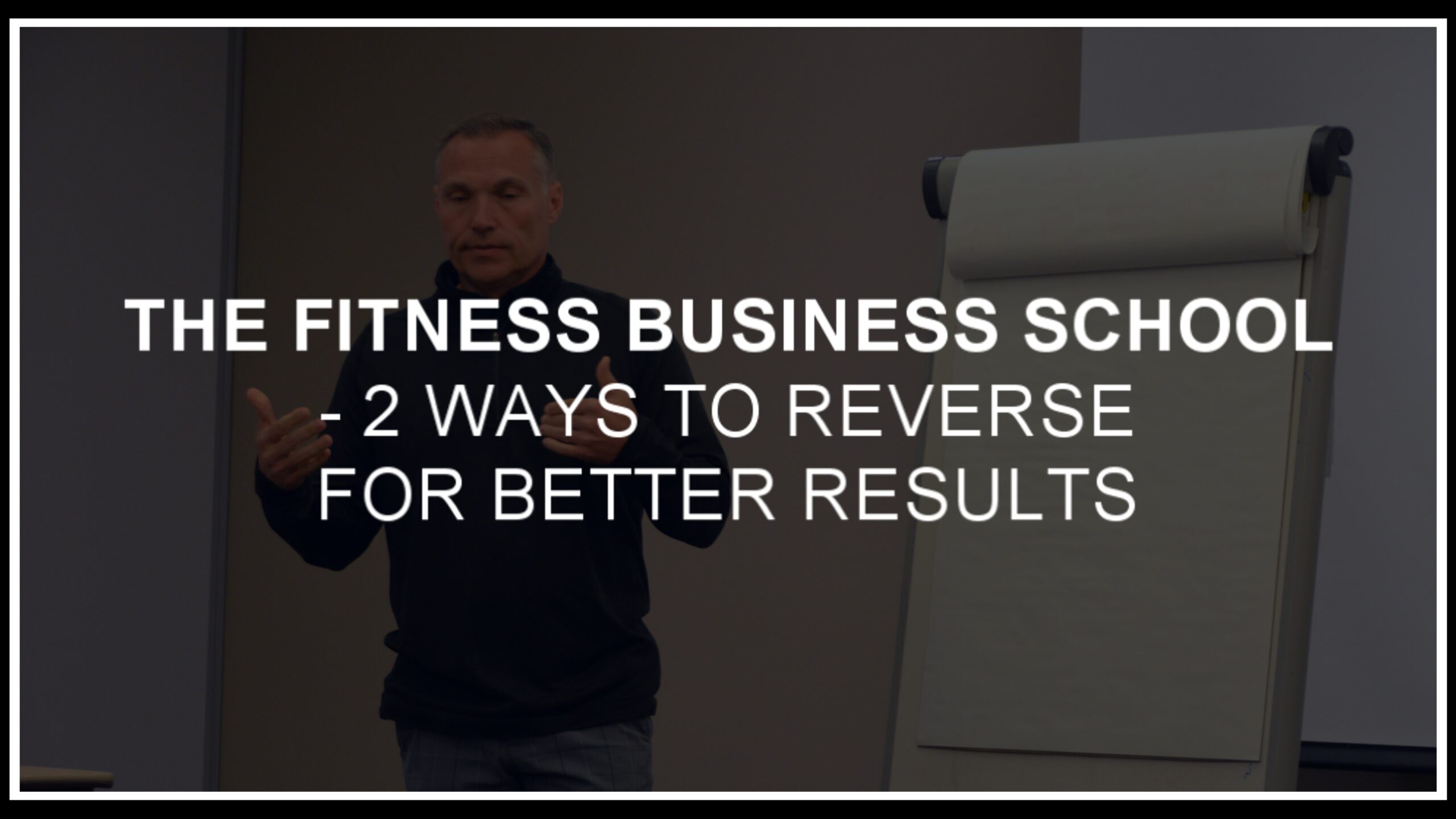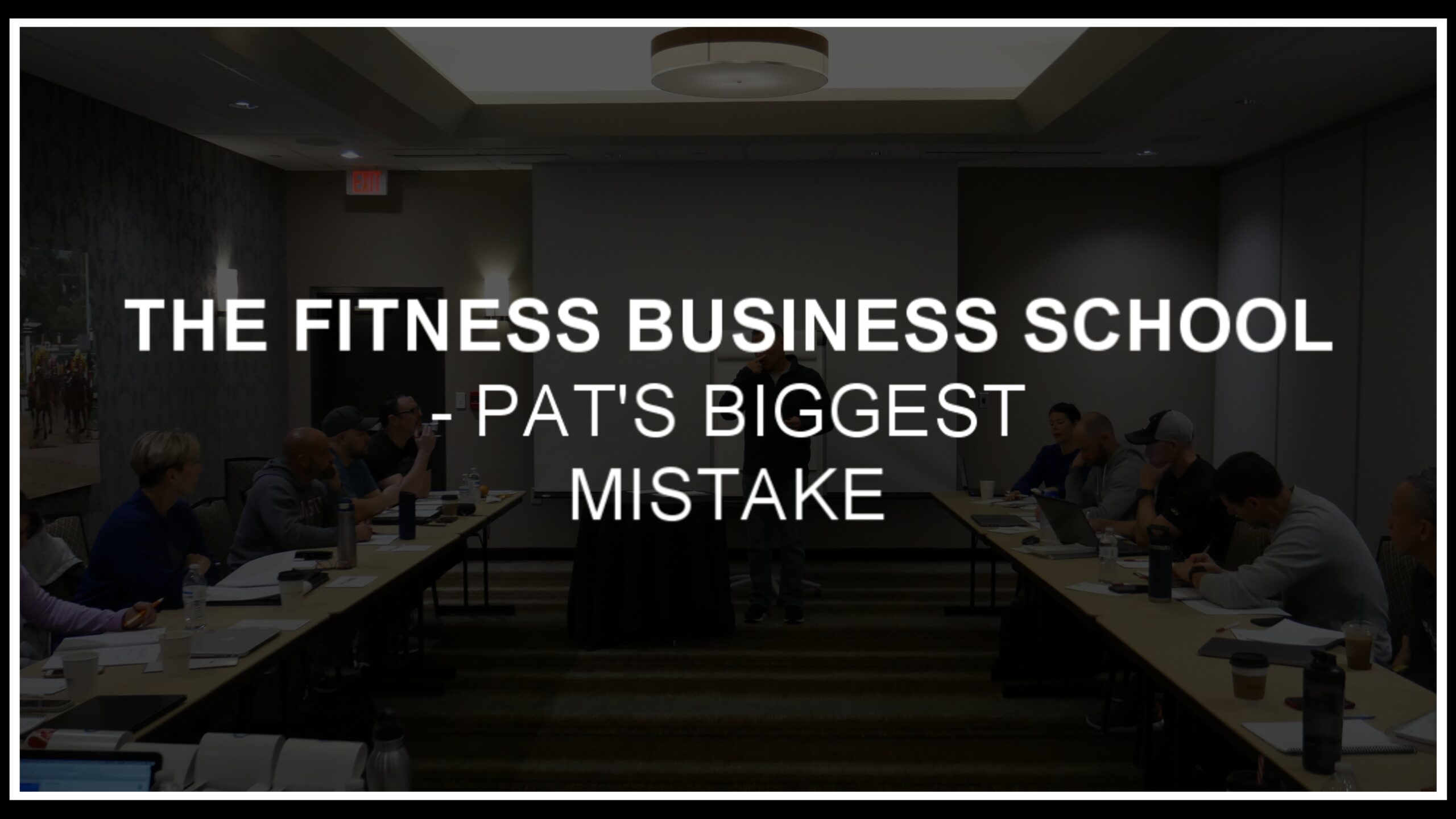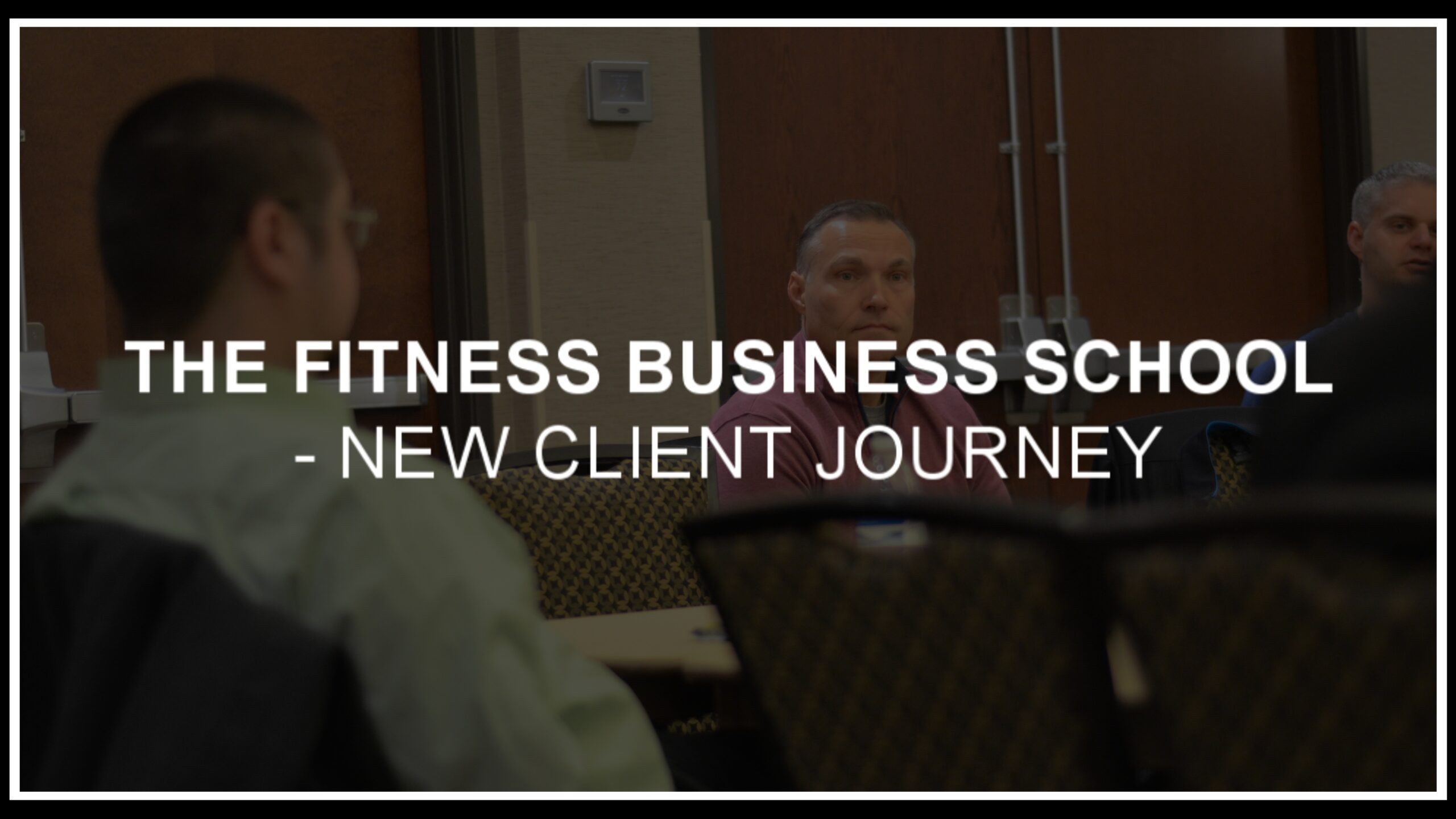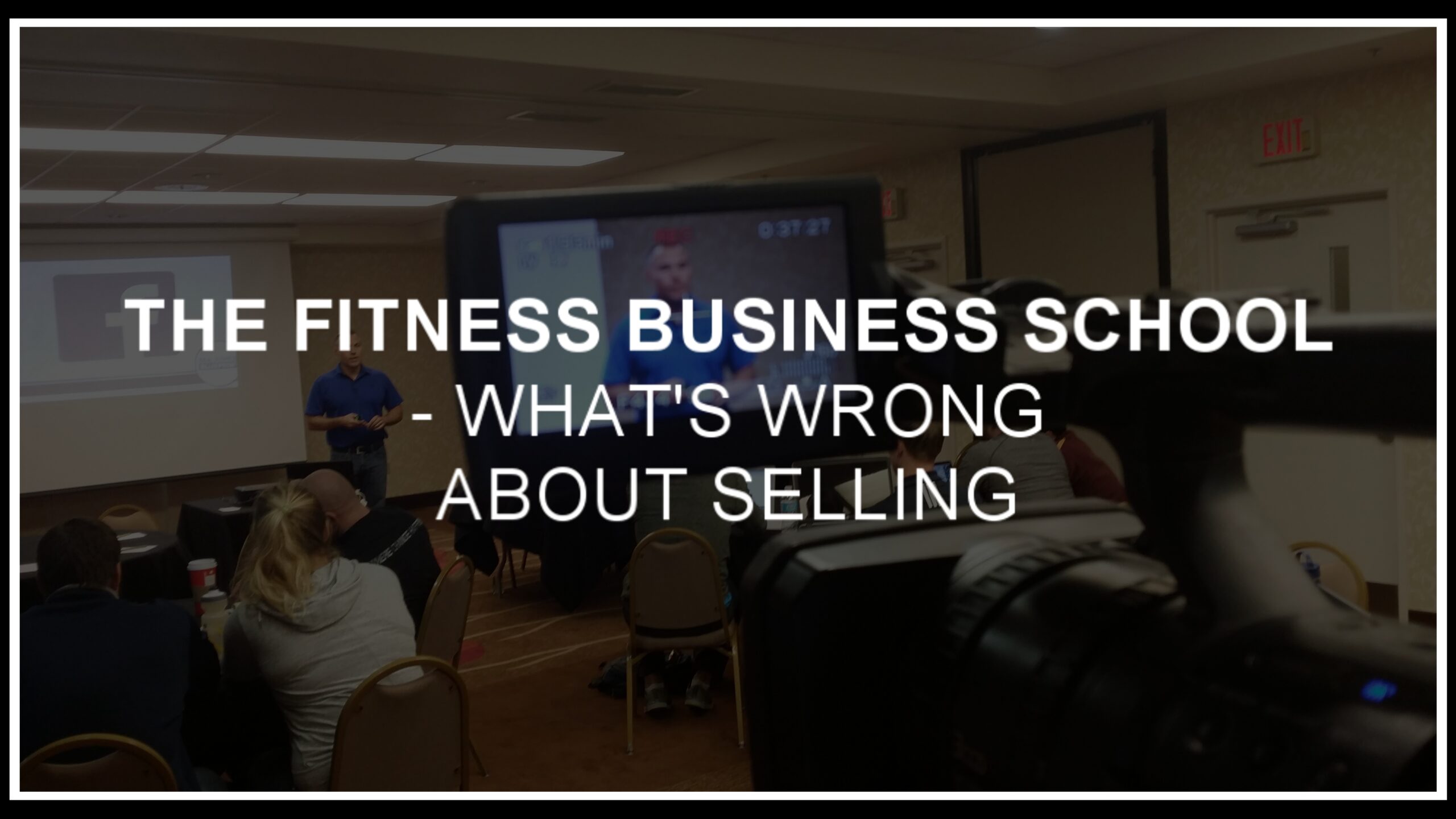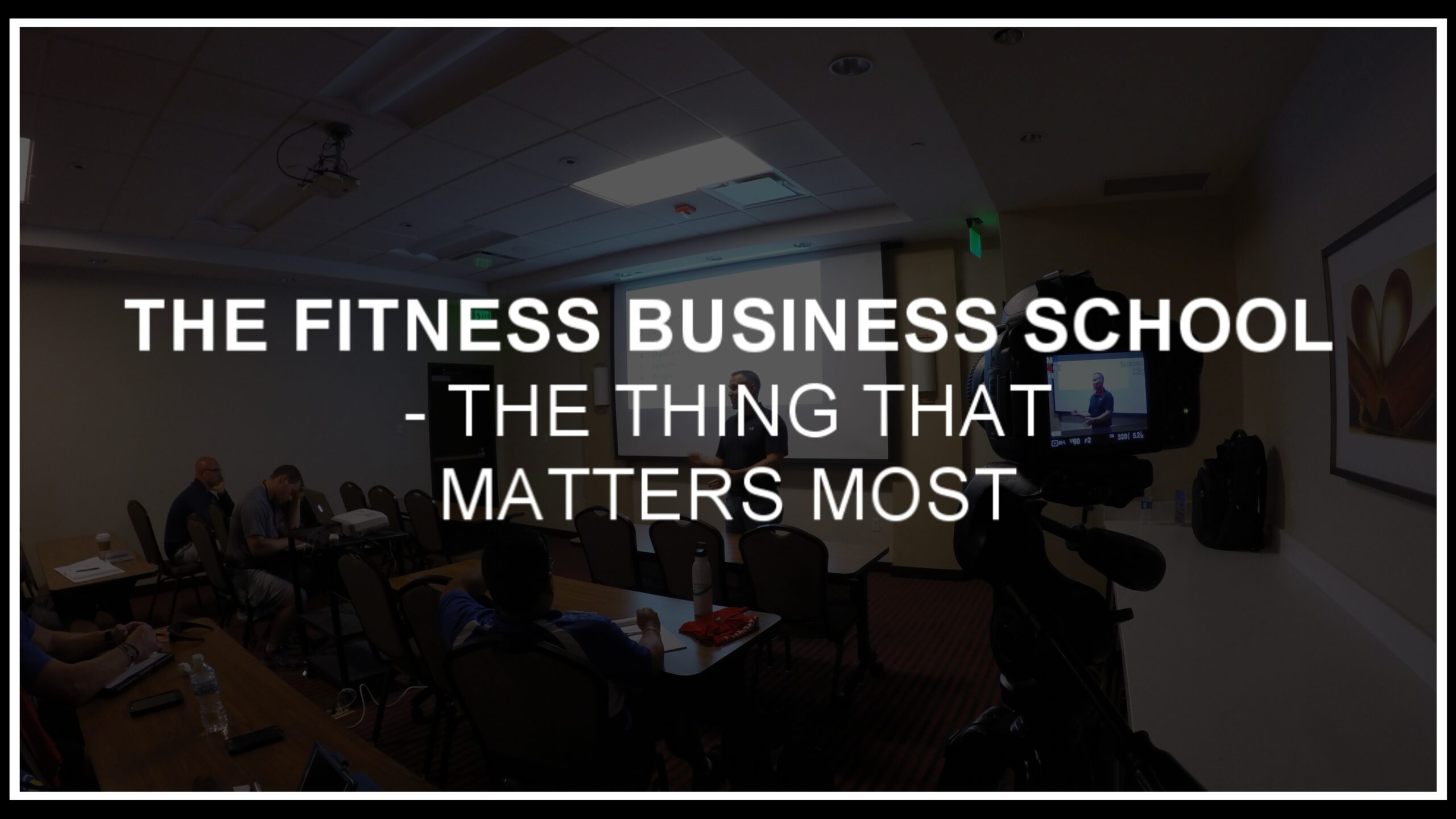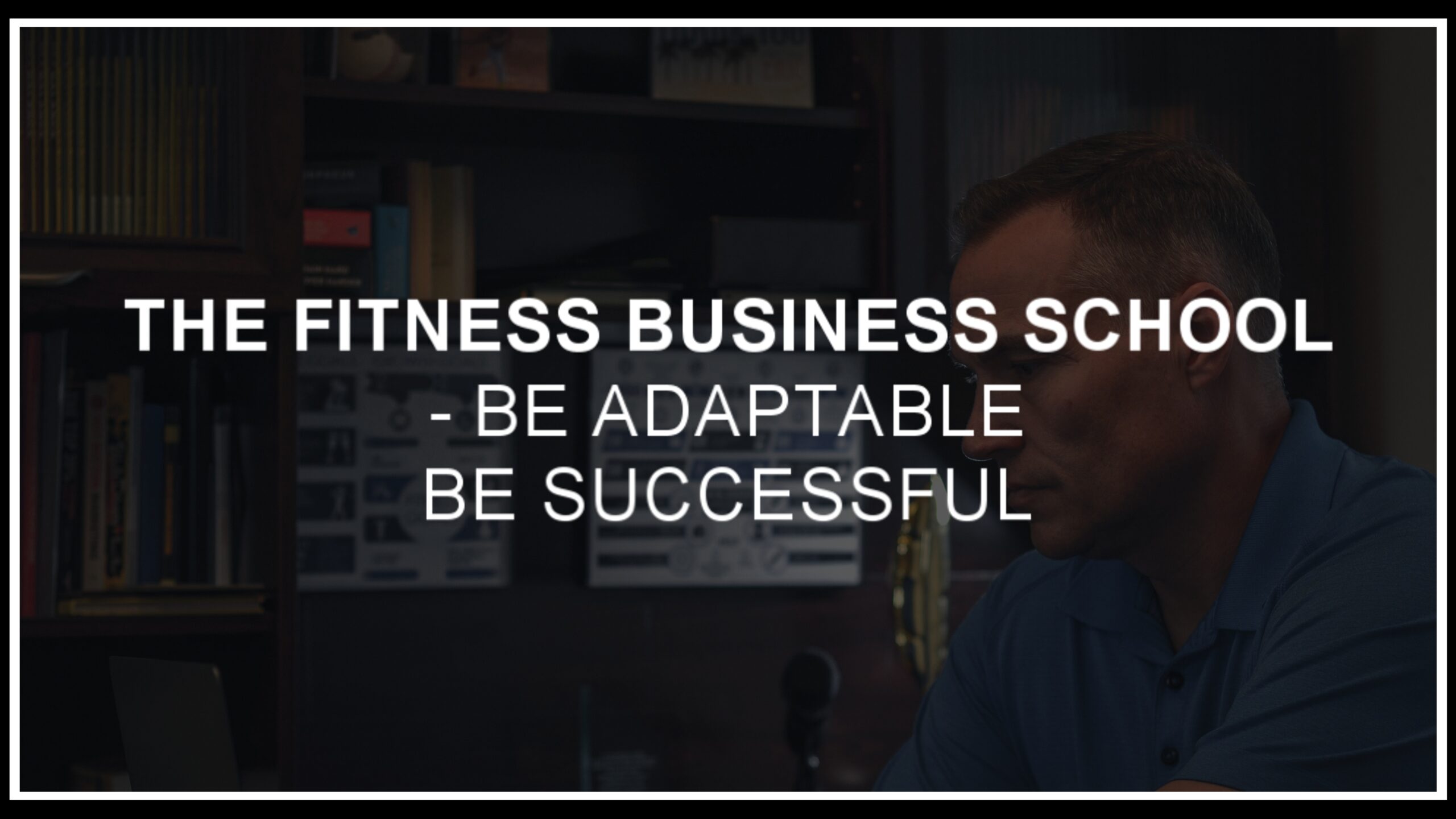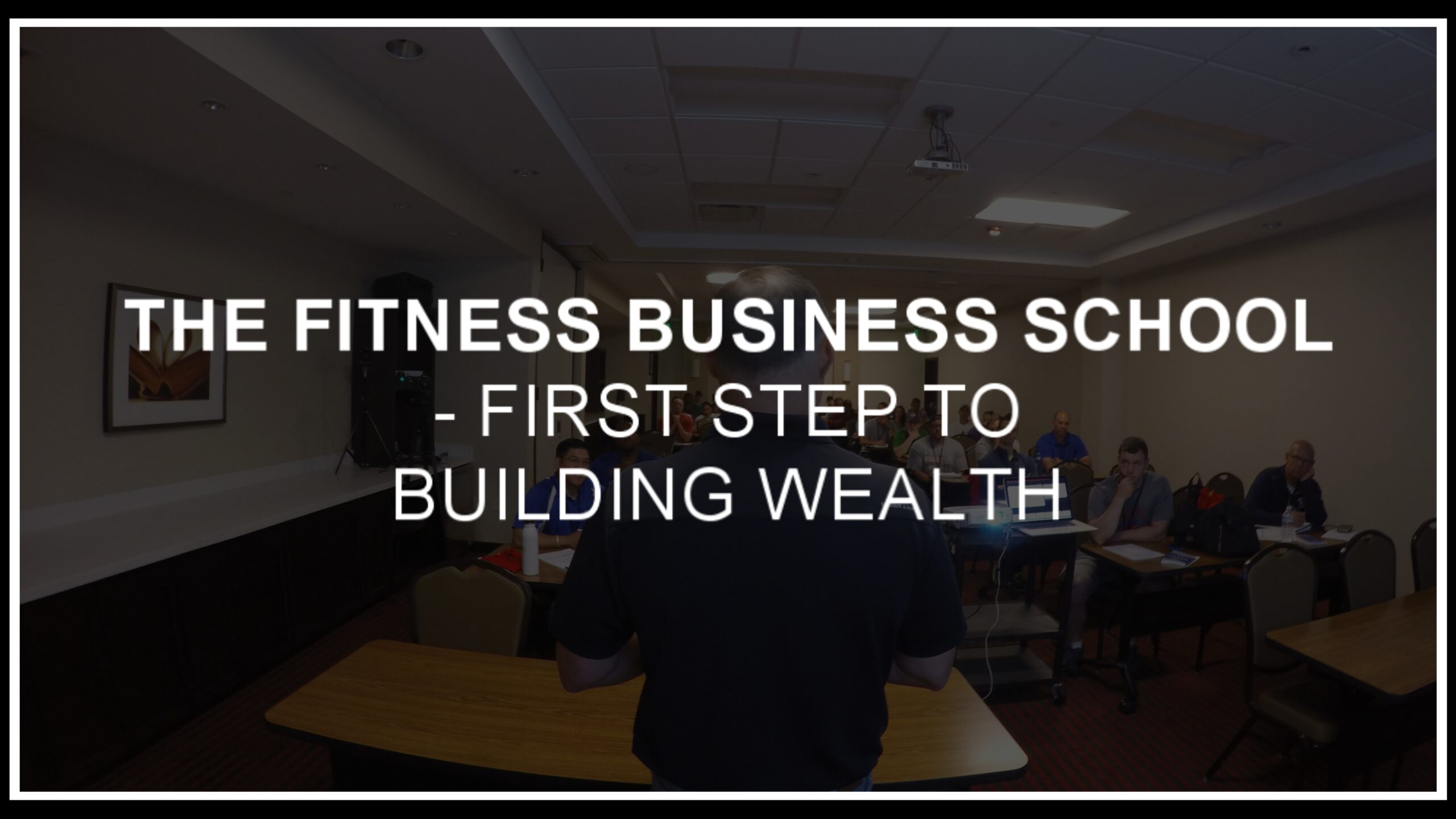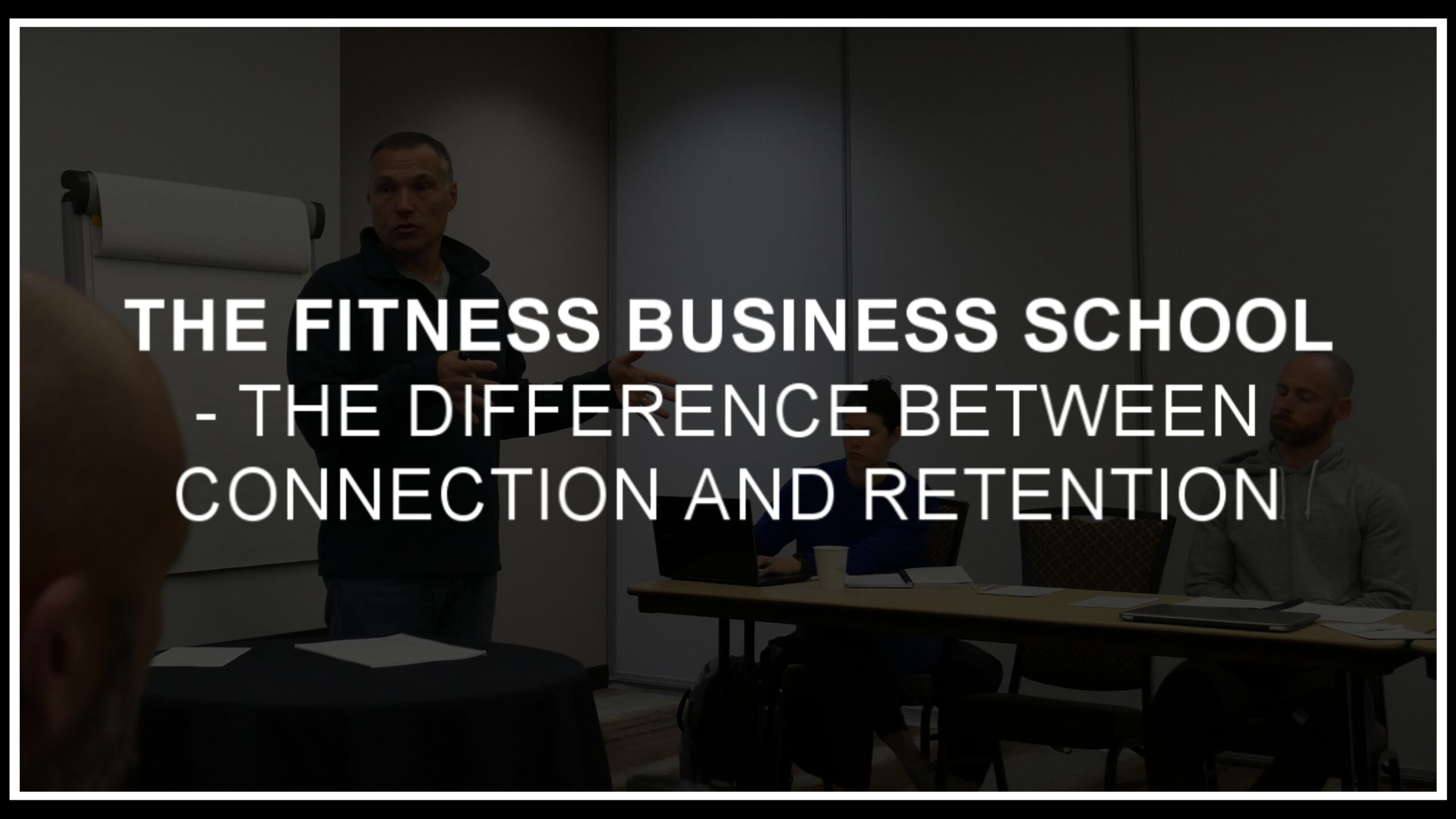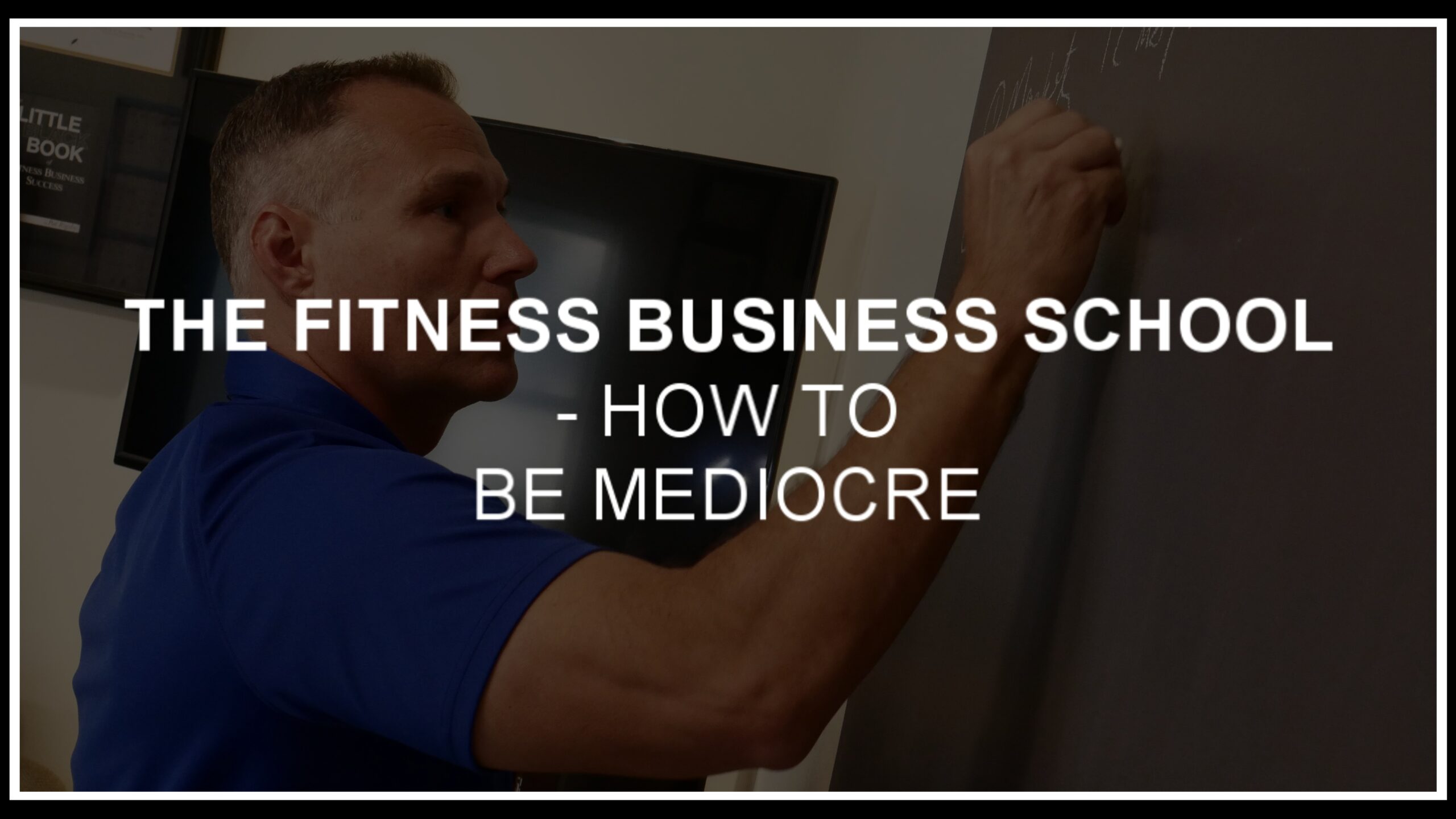Show Notes
- Often, there’s too much focus on the next thing
- Try a reverse bucket list
- Reflect on accomplishments and milestones
- Anything you can “dust off” and reuse?
- Look back and be appreciative
- If something worked in the past, it may work again
- Take a hard look at sunken cost issues
- Some things just don’t work, reverse course
- Do a professional cleaning and clear life clutter
Full Transcript
Hey, Pat Rigsby here and in today’s episode I wanna talk with you about two ways you can hit reverse
for better results. Let’s get started.
Welcome to the Fitness Business School podcast, the show for fitness business owners who
want to grow their income, increase their impact and improve their lifestyle. Be sure to listen to the end
of this episode because we have a brand new special offer exclusive for listeners. So stay tuned.
When we think about success, so much of it is about this pursuit of things in front of us. It’s
about adding things to our plate. It is always kind of looking out there and how far we still
have to go. And there’s this kind of almost never ending kind of sense of i, I guess,
being insufficient or it wasn’t good enough. Or if you got five new clients in a
month, you needed eight.
If you got 10 new clients in a month, you needed 15, there’s always that kind of
mentality that, that I see in at least a pretty significant segment of the entrepreneurial population.
There’s always that kind of either feeling like what you do isn’t enough, or there’s
always the next thing that you have to go pursue and never really celebrating the moment. And so one of
the two things that I want to talk with you about hitting reverse for results is what I call or think of at
least, is a reverse bucket list. And people talk about a bucket list, thinking about all the things
that they want to do, all the things that they’ve yet to do that they would like to accomplish. And, and
that’s great. I’m all for pursuing new things and exploring new opportunities and having new experiences.
But a reverse bucket list should be this opportunity to reflect, and this would work personally too. And,
and really, I’m kind of thinking about it through the business lens as we record this episode, but it would
work for personal or professional. And it’s reflecting on the things that you’ve already accomplished. It’s
reflecting on the successes you’ve already enjoyed, the experiences you’ve had, the milestones you’ve
reached, and being able to look back and say, okay, I’ve done this. And so I know,
there’s a wonderful book by I believe Dan Sullivan and maybe Ben Hardy called The Gap in the
Game. And I learned about the gap in the gain through Dan Sullivan years ago. And really it’s, you
know, the gain is how far we have to go. The, or the gap is how far we have to go.
The gain is how far we’ve come. And, and the reverse bucket list is very much this list
or compendium of your successes, achievements, accomplishments, experiences along the way. And
hopefully you can look back at that and say, okay, I’ve done these things so I have evidence that I can
accomplish meaningful things going forward. And that should give us confidence. Maybe when we’re
lacking confidence, there are things that you’ve accomplished that you can look back on in the past and
say, how can I kind of dust that off and reuse that maybe with a fresh coat of paint? Or what can I learn
from that experience that’ll help me succeed in this next endeavor? And then some of it’s just being able to
reflect positively on the time and resources that you’ve already in invested. One of my, I I, I think one of
my kind of favorite things I, I guess, and I’m not sure that I would’ve thought about it this way, but I’ve
reframed it in my mind to think about this way, is seeing the memories that pop up on social media for
family stuff that we’ve done, stuff that when our boys are much younger, places we’ve
gone, things that we did, moments that we shared, and there’s a little bit of nostalgia and
certainly a, a little bit of a sense of wishing you could go back and recognizing how much time flies.
But the thing that I think I’ve reframed for myself is just being able to look back and be so appreciative
and grateful of being able to have those experiences and that serving as a prompt to remind me about
those experiences, because sometimes we lose track of it. We’re so caught up in what we’re pursuing
going forward that we may, if we sit down and look through the whatever
today’s equivalent of a photo album is and, and see this stuff, yeah, we can reflect on it, but otherwise it
kind of gets lost in the, the busyness of today and the pursuit of tomorrow. So I would encourage you to
look back professionally and also personally and really kind of sketch out your reverse bucket
list. It’ll make you feel better about the things you’ve accomplished. It will give you confidence going
forward.
It’ll give you ideas for things that you can succeed with. I mean, you’d be amazed at how many
conversations I had with business owners who looked back and their things that worked great in the past
that they just, for whatever reason, stopped doing, they got bored with and maybe the market didn’t get
bored with it, or they did something pre pandemic and then circumstances changed and, and there’s so
many things that they can kind of dust off and use again, and not have to build from scratch and not have
to go invest in some new kind of done for you program or whatever else they have what they need. So
that’s reverse bucket list. The second one is kind of reversing course on some of what you’re doing,
because there’s this idea of a sunk cost, right? Like, just because you’ve already invested
that time, sometimes it’s just I mean, sometimes you just gotta let go and you’ve got to be able
to say, okay, that’s just that is a lesson learned and endeavor that helped me,
come up with some ideas or maybe serve as a springboard for something else, but it doesn’t serve me
anymore.
There are plenty of things that we do now that don’t serve us any longer, whether it is things that we’re
investing money on, right? I mean, you can go through and pair off subscriptions if you review your
credit card statement every month, because they may be things that you’re just not using regularly. There
are things, I mean, I, I go through my closet every few months and pair off things that I haven’t worn
because they’re, they could go serve somebody else, but they’re not serving me. There are people that, that
are in your world that are kind of energy vampires or people that drag you down. There are newsletters
that you subscribe to, podcasts that you listen to, clearly not this one, but that, that just aren’t bringing you
any sort of benefit, any sort of improvement or bringing you joy. There are plenty of things that you can
kinda reverse field on because this idea that just because you’re doing it means that you should continue
to do it.
Or just because you are investing time in something, investing money in something, spending
time with someone doesn’t mean that you should continue because, that’s not necessarily
the, the best path forward. And, and I think that one thing that I have recognized time and time again is
when I let go of certain things, I feel a sense of lightness, which it, I mean, it’s funny, I’m not sure I’ve
ever said that word out loud before, but there’s this space that’s available to, to do more
things. It’s like closing files on a computer and it runs faster. It is just this
sense of opportunity and optimism. So one thing that if you’re looking for a way to
improve what’s coming next and create opportunity to move forward, sometimes one of the easiest things
that you can do is remove things that don’t serve you.
Consider it a professional fall cleaning or spring cleaning or whatever else. I mean, I guess the traditional
term is spring cleaning, but since I’m recording this in September any will do. So two ways to
kind of reverse course or look backwards to make the next thing better to reverse course on things that
you’re doing to create more opportunities to improve, to really also enjoy what you’ve already done.
Because as an entrepreneur, as a high achiever man, that’s the last thing that I’ll touch on here is we just
aren’t very good at enjoying the wins. We, we either dwell on the losses or are onto the next pursuit for
what’s next and, and don’t enjoy the moment. So really spending a little bit of time on this reverse bucket
list is a great opportunity for you to enjoy how far you’ve come and give you a greater opportunity and
likely greater fulfillment for what’s next.
With how far you’re gonna go.
Thanks for listening to this episode of The Fitness Business School.
Before you go, I have a quick announcement:
One of of the things that we’ve been doing with our current clients is taking them through this Ideal Business diagnostic and really what it is, this checklist that allows you to pinpoint exactly what your business needs next so you can keep improving, keep growing, and build a business that you love to own, one that pays you well, one that allows you to have the impact you wanna have and one that allows you to have a lifestyle that you truly enjoy.
In this diagnostic, we walk through everything and we do an evaluation and can instantly pinpoint what you need to do next to build that business that you want. I’m going to extend this opportunity to get on with either me or my team and take you through this evaluation and fix your business’s most vital needs fast.
So if we take you through this, you’re gonna be able to make those vital changes that you need to finally have what I call your Ideal Business. If you’d be interested in going through this entirely free, risk-free diagnostic with us and learn what you already have in place, what you’re doing well and where are your greatest opportunities for rapid improvement are just shoot me an email with diagnostic in the subject line to [email protected].
Again, an email to [email protected] with diagnostic in the subject line will get
you scheduled and take you through this evaluation to help you build the business you want.


